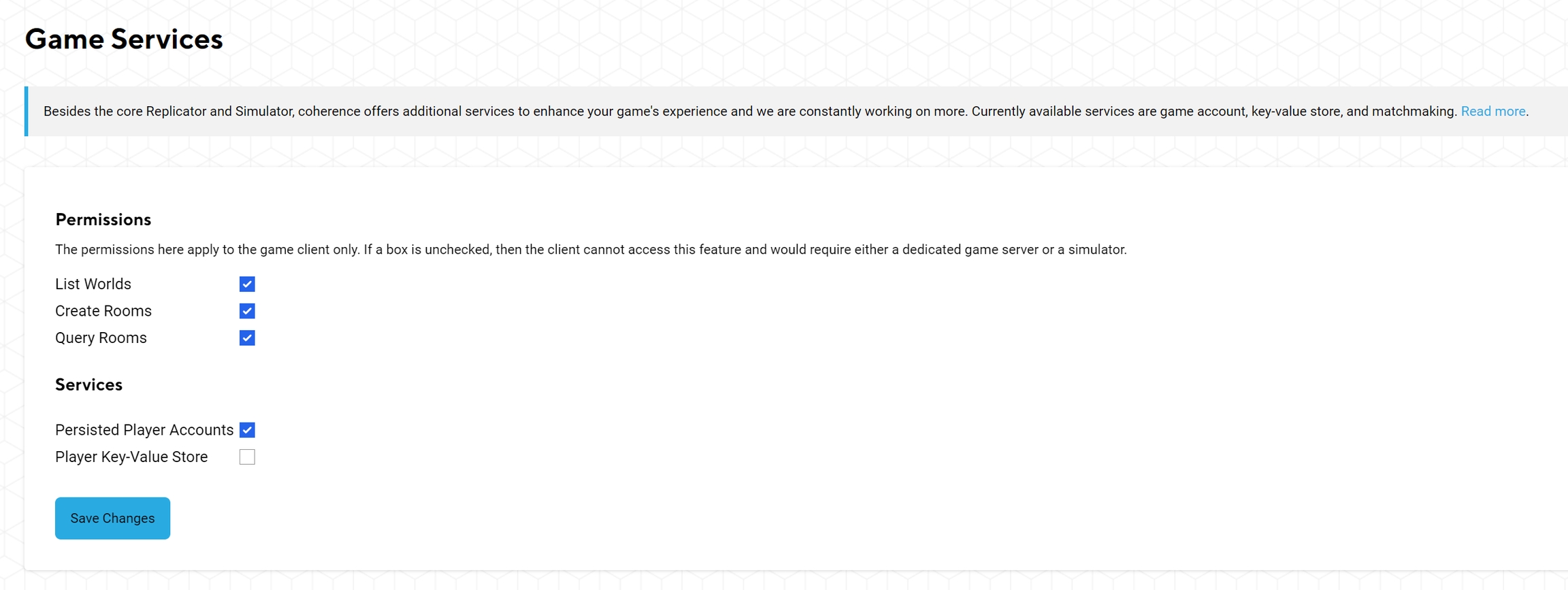Account
Motivation
coherence provides an API for creating player game accounts that uniquely identify players across multiple devices. An account is required in order to use the rest of the online services, like the key-value store and matchmaking.
Account Types
There are two types of accounts that are currently supported - guest accounts and user accounts.
Guest Accounts
Guest accounts provide an easy way to start using the coherence online services without providing any user interface for user names or password. Everything is controlled with the API, and is completely transparent to the player.
The session data for the account is stored locally on the device so it is important to know that uninstalling the game will also wipe out all the data and the account will be no longer accessible even if the player installs the game again.
User Accounts
User accounts require explicit authorization by the player. Currently, only user name and password are supported as means for authentication. The user interface for entering the credentials must be provided by the game. Check the API how to use this feature.
In the future, there will be support for many more authentication mechanisms like Steam, Google Play Games, Sign in with Apple, etc.
Persisted Accounts
By default, all accounts created in your project will be transient, which means that they will not be stored in the Database.
If you want your player accounts to persist, you can enable the feature in the Dashboard, in the Game Services section:

Using player accounts from Unity
Please refer to the Cloud Service API: Authentication Service.
Was this helpful?

